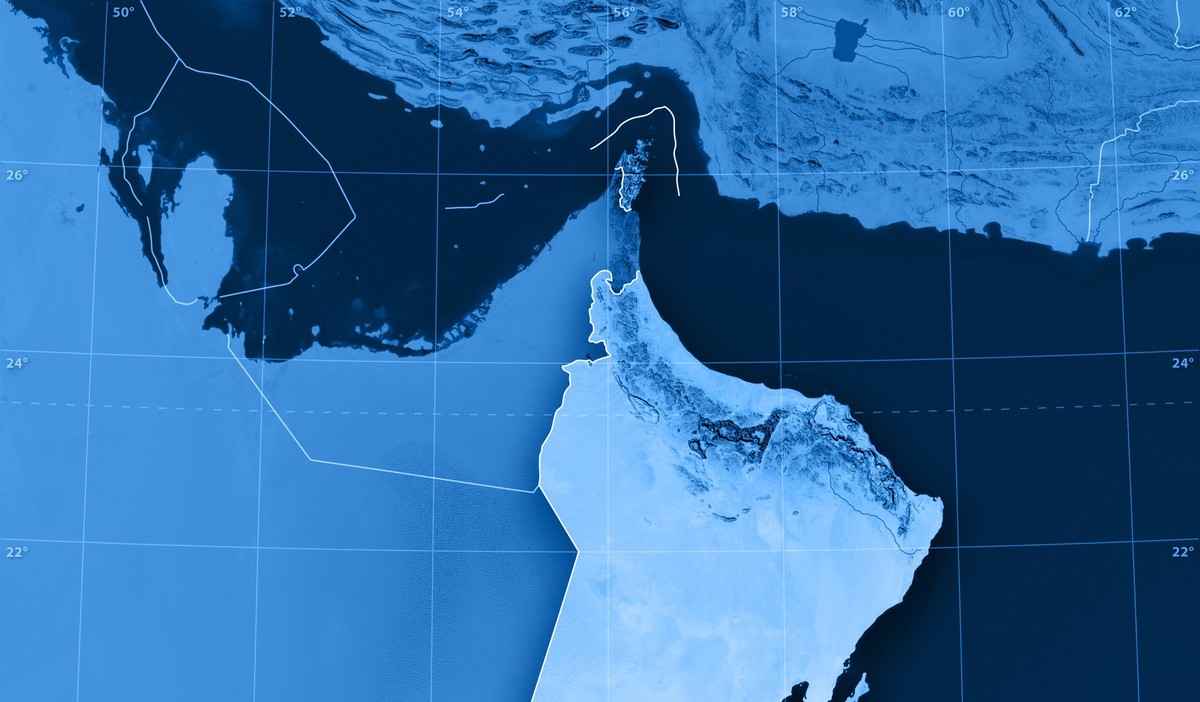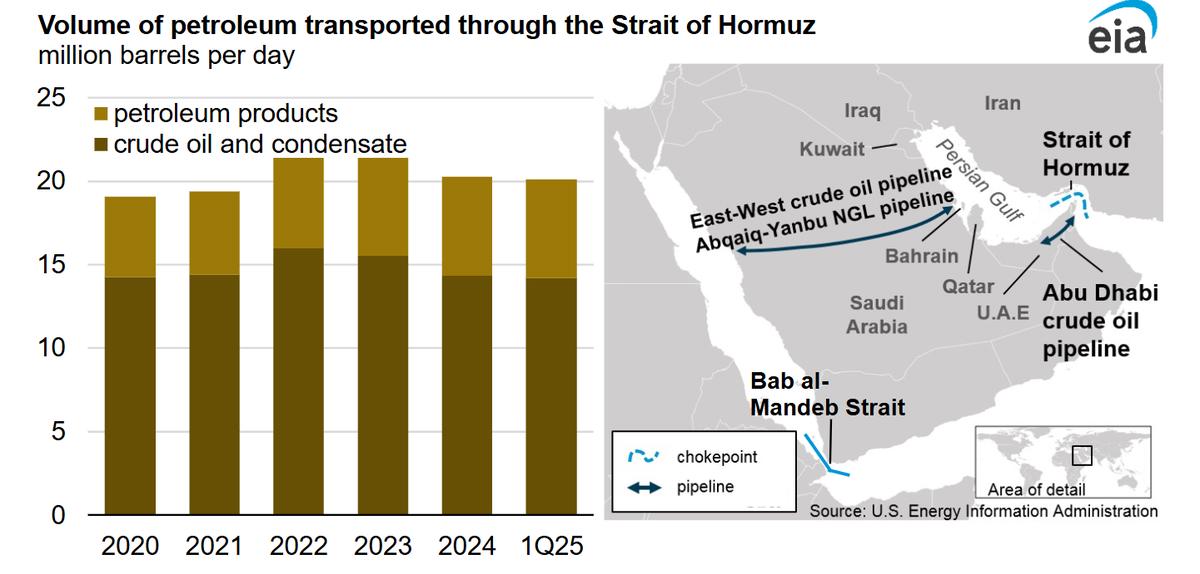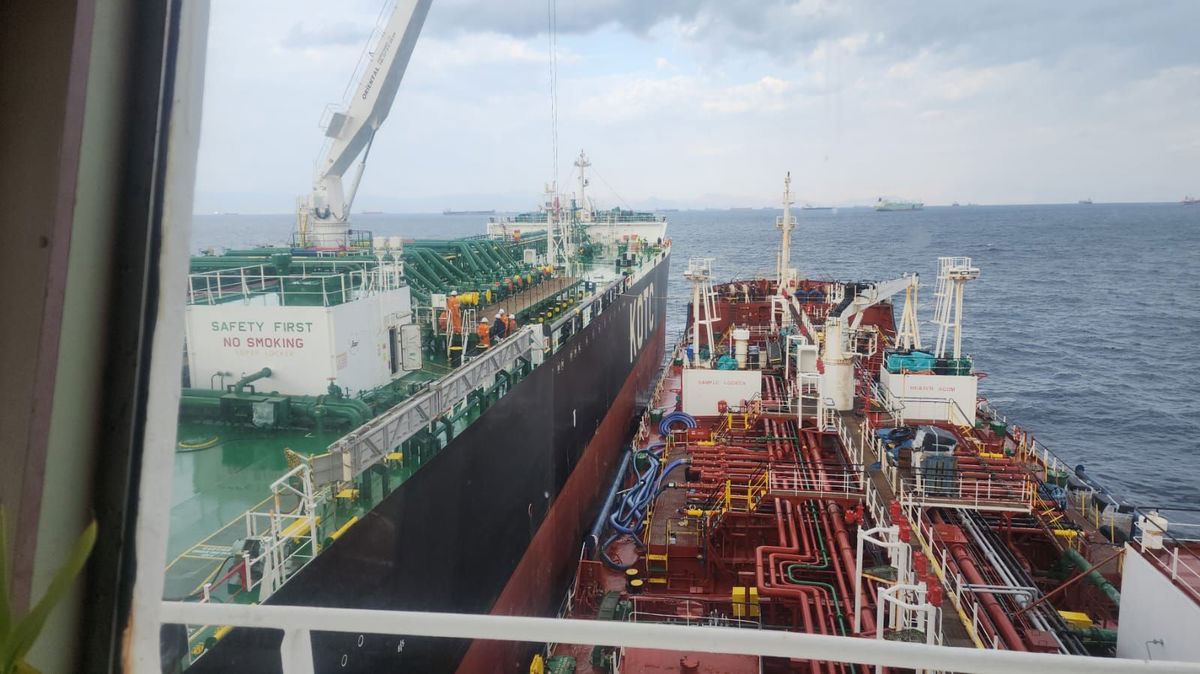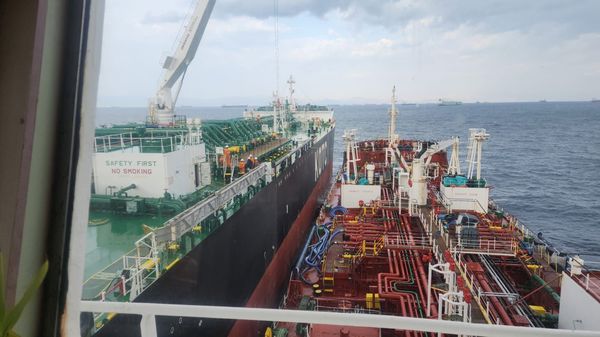Strait of Hormuz crude oil and LNG flows under growing threat, EIA says
The US Energy Information Administration (EIA) has warned the global oil and shipping industries that oil flows through the Strait of Hormuz are at risk from war in the region.
 IMAGE: Strait of Hormuz. Getty Images
IMAGE: Strait of Hormuz. Getty Images
The Strait of Hormuz, located between Oman and Iran, connects the Persian Gulf with the Gulf of Oman and the Arabian Sea. It is one of the world’s “most important oil chokepoints,” the EIA says.
Large volumes of oil pass through the critical chokepoint. Last year, oil flow through the strait averaged 20 million b/d, or about 20% of the total global petroleum liquids consumption, according to the EIA.
“The strait is deep enough and wide enough to handle the world's largest crude oil tankers,” the US agency notes.
The strait has faced persistent threats since the outbreak of the Israel-Hamas conflict in 2023, with Iran and other regional proxies repeatedly targeting commercial vessels and oil tankers navigating the area.
Brent crude’s price has spiked in the recent days, surpassing $77/bbl, amid recent escalations between Iran and Israel, with the latter targeting Tehran’s nuclear and energy facilities with a barrage of airstrikes.
Weaker oil flows
Between 2022 and 2024, crude oil and condensate transiting the Strait of Hormuz declined by 1.6 million b/d, the EIA notes. This decline partially reflects voluntary production cuts and lower exports from Saudi Arabia, Kuwait and the UAE.
Oil flows around the Bab al-Mandab Strait, connecting the Arabian Sea and the Red Sea, were disrupted by regional hostilities last year. Cargo transits through the Strait of Hormuz also declined as Saudi Arabia’s national oil company Aramco shifted seaborne crude oil flows from the Strait to ports along the Red Sea, the EIA says.
 IMAGE: EIA
IMAGE: EIA
In the first quarter of this year, total oil flows through the Strait of Hormuz “remained relatively flat compared with 2024,” according to the EIA.
Critical chokepoints
About 84% of the crude oil and condensate and 83% of the LNG that moved through the Strait of Hormuz last year went to Asian markets, the EIA notes. China, India, Japan and South Korea were the top buyers of the crude oil moving through the strait.
“These markets would likely be most affected by supply disruptions at Hormuz,” the EIA says.
Chokepoints are narrow channels along shipping routes that are critical to international energy security, the EIA explains. While alternative routes exist for many chokepoints, most crude oil volumes passing through the Strait of Hormuz have no alternative means of exiting the region, except through a few pipelines.
“The inability of oil to transit a major chokepoint, even temporarily, can create substantial supply delays and raise shipping costs, potentially increasing world energy prices,” the energy agency says.
By Aparupa Mazumder
Please get in touch with comments or additional info to news@engine.online





